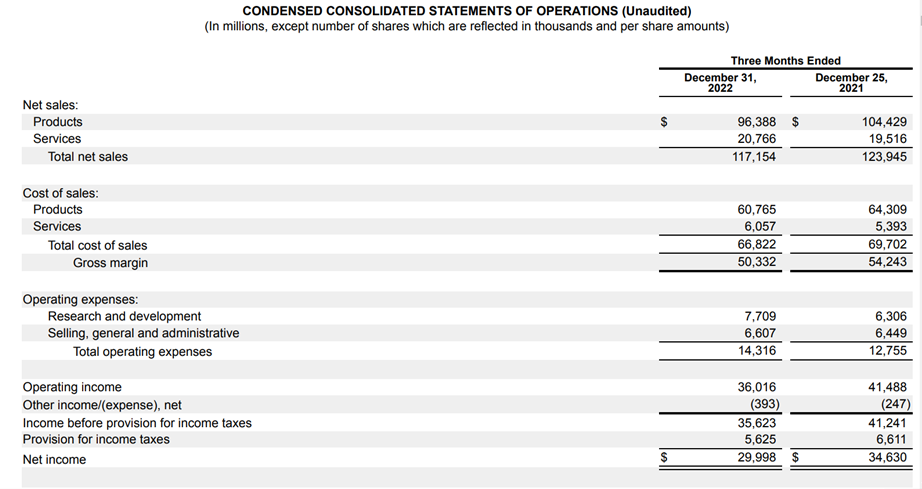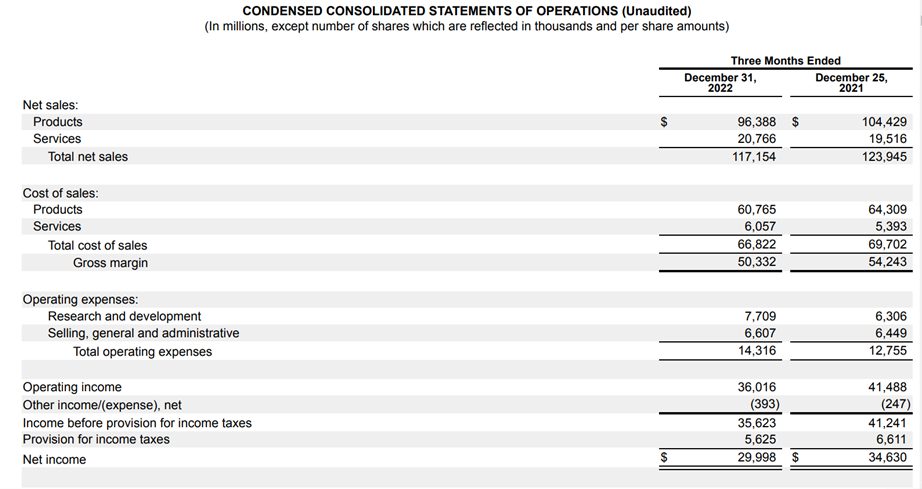Operating Margin
Measures the efficiency and profitability of a company's operations
What Is Operating Margin?
The operating margin is one of the many financial metrics used to analyze financial statements. The margin measures the efficiency and profitability of a company's operations.
The operating margin, also known as the return on sales or EBIT margin, measures a company's efficiency and profitability by calculating the percentage of revenue remaining after deducting operating expenses.
The operating income is a business's revenue after subtracting operating expenses such as salaries, rent, and utilities.
The operating margin provides valuable insight into a company's efficiency and profitability, serving as a key financial metric for investors, stakeholders, and management to analyze.
It makes an important financial metric for investors, stakeholders, and management to look at and examine.
Key Takeaways
Operating Margin Formula
The formula for calculating is:
Operating Margin = (Operating Income / Revenue (Net Sales)) *100
Fundamentally, the metric considers all a company's operating expenses, such as salaries and benefits. Yield and gross margin are different metrics measuring different aspects of financial performance.
Why is Profit Margin Important in Business?
The importance lies in its ability to show how efficiently a business uses its operational resources to generate profit. A higher return on sales indicates that a business is keeping a higher revenue after paying off the operating expenses, which translates into higher profits.
Conversely, a low margin suggests the company spends too much on its operational expenses. As a result, it can eat into its profits.
Companies may have a lower operating margin because they are investing in R&D. In the short term, their margins are lower in the hopes of new products and services that can generate more revenue.
Businesses can improve this margin in several ways. One approach is to reduce operating expenses while increasing their revenue, or at least maintaining it. Moreover, this can be accomplished through cost-cutting measures, such as streamlining processes or negotiating better supplier contracts.
Note
Another approach is to increase revenue while maintaining or reducing operating expenses. This can be achieved by expanding into new markets or product lines or improving marketing and sales efforts to increase customer acquisition and retention.
A higher margin indicates that the business will likely have an effective pricing strategy and better control of its costs. Also, it can suggest that the company has a more efficient business model.
Analyzing this margin over time can reveal a company's financial performance trends. In addition, such analysis can inform management decisions on investments, cost-cutting, and other strategic initiatives.
Investors and creditors often view a higher margin favorably as it indicates better profitability, which can enhance shareholder value and provide assurance for lenders.
Operating Margin Example
Here is an example of a quarterly statement for Apple Inc.:

In this financial statement, we will focus on the current statement period, that is, the period ending on December 31, 2022. Please note that the figures for this statement are in millions.
Breaking down the statement, you can see that Apple generated net sales of $117,154; now, you can subtract $66,822, the total cost of sales (COGS). This gives you a gross margin of $50,332.
Going further down the statement, you reach the section on operating expenses. In the case of Apple, they reported expenses for research, development, selling, general, and administrative.
Adding those two figures, Apple's total operating expenses were $14,316. Finally, you subtract the operating expenses ($14,316) from the gross margin ($50,332), resulting in an operating income of $36,016.
You have obtained the two figures to calculate Apple's operating margin.
Here is the formula to calculate the margin:
Operating margin = (Operating Income / Revenue (Net Sales)) *100
Operating Margin = (36,016 / 1117,154) *100 = 30.75%
So, for this 10Q, Apple's operating margin was 30.75%.
Example 2
Let's understand one more example.
| Revenue | $1,000,000 |
|---|---|
| COGS | $500,000 |
| Gross Profit | $500,000 |
| Operating expenses | $300,000 |
| Operating income | $200,000 |
| Operating margin | 20% |
The table above shows a breakdown of company XYZ's finances. XYZ generated a gross profit of $500,000, i.e.,
Gross profit = Revenue ($1,000,000) - COGS ($500,000)
When you subtract the operating expenses ($300,000), the operating income is left to be $200,000. This is where the operating margin comes in. To calculate the return on sales, you divide the operating income by the revenue/sales that XYZ earned.
To beautify the result to a cleaner and easy-to-read figure, you multiply the result: in this case, 0.20 by 100.
Operating Margin = (200,000 / 1,000,000) *100
In this case, the margin for XYZ is 20%. This tells you that for every dollar of revenue XYZ generates, XYZ company keeps 20 cents in operating profit after deducting all the operating expenses.
Drawbacks of Operating Margin
The return on sales has limitations. It should primarily be used to compare companies in the same industry or sector. Why?
Not all companies operate in the same ways, have the same business models, or have the same yearly sales. Comparing Company A's sales return in the technology sector to Company B's in the retail industry will be difficult.
Both companies operate in different ways and with different margins, making it challenging to calculate and compare their return on sales meaningfully. Comparing companies in the same sector with a high correlation between their business models and sales is better.
Additionally, the return on sales does not consider certain variables that may impact cash flow. They include working capital, capital expenditures, and non-operating expenses such as interests, taxes, and depreciation.
These variables, either included or excluded, can ultimately alter the cash flows, the capital coming in and out of business, to be higher or lower than the return on sales. Understanding a company's cash flow performance is essential to evaluate its financial health.
Cash flow encompasses the cash from revenue, investments, and other cash-in-flowing activities, as well as the cash the company spends on expenses like salaries, R&D, inventory, etc.
Think about it as if it were your bank account. For income, your account shows the money that comes in and out of it, and at the end of the month, you get a monthly statement showing every transaction and ending balance.
Note
A positive cash flow signals that a company generates more cash than it is spending. The company can meet its obligations, invest in new projects, and exploit market opportunities.
EBIT Margin vs. Operating Margin
You might hear these two terms thrown out as synonyms. While correct, the primary difference between them is that EBIT includes all non-operating income, non-operating expenses, and other income, whereas the operating margin does not.
In a sense, everything being equal, operating income is also known as EBIT. Now, if the income statement has a section that includes additional non-operating income and expenses, that figure would change.
Operating and EBIT margins are colloquially intertwined because they exclude interest and taxes.

Our previous example showed that Apple's operating margin was 30.75%. Still, if you look closely at the quarterly income statement underneath the operating income of $36,016, there is an extra section called "other income/(expense), net."
That amounts to -$393, so you can add that operating income. In this case, you get that Apple's EBIT is $35,623, which makes the EBIT margin (EBIT / Revenue) 30.41%.
Note
EBIT is a non-GAAP measure, not recognized under Generally Accepted Accounting Principles (GAAP). However, operating income is a financial metric recognized and reported under GAAP, used to measure a company's profitability. Companies, analysts, and investors widely use EBIT alongside EBITDA.
Other Profitability Metrics
You can grasp a company's financial health over different levels of the income statement through the following metrics:
1. Gross margin
At the early levels, you can calculate the gross margin. It is a representation of the percentage that the company generates versus COGS.
The formula for the gross margin is:
Gross Margin = (Revenue - COGS) / Revenue
A higher gross margin signals that the business can manage costs and generate higher revenue.
2. Net Margin
Net income is near the end of the income statement. It is the total capital the business generates and includes all transactions for the reporting period, such as income received and expenses paid.
With the net income, you can calculate the net margin. The formula is:
Net Margin = Net Income / Sales
The net margin represents the percentage of profit a business retains after deducting all expenses from its revenue. A higher net margin indicates that the company retains a larger portion of each dollar of revenue as profit.
Free Resources
To continue learning and advancing your career, check out these additional helpful WSO resources:




or Want to Sign up with your social account?